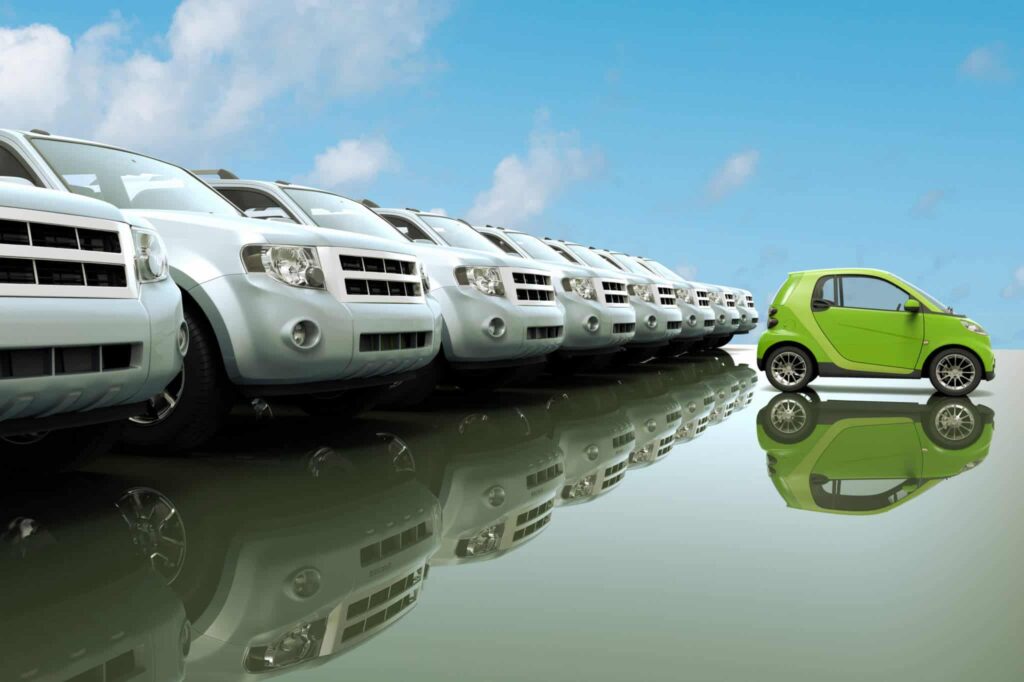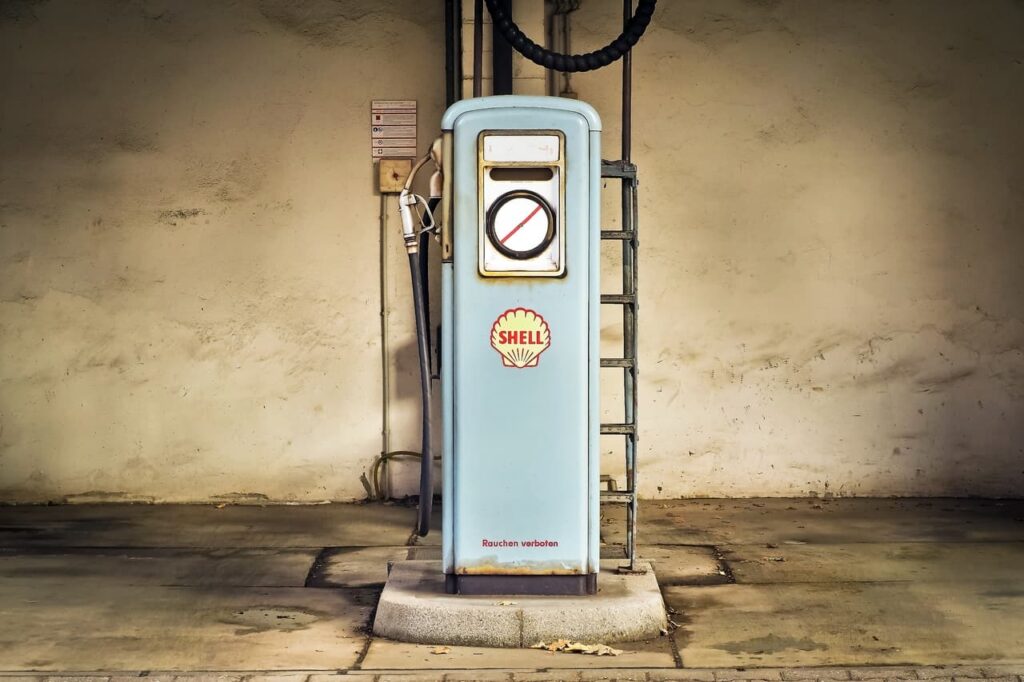11 April 2022 Concept Car
Are you looking to finance a commuter car? If so, you may have many questions:
What should you look for? What makes a particular brand a better choice than another? Which are the cheapest to buy, cheapest to drive, cheapest to finance models?
In this big guide, we have all the answers for you.
Instead of giving you a list of suitable models, we’ll instead give you the tools to arrive at the best decision yourself.
You’ll save money, trouble and valuable time in the process. Ready? Then let’s go.
Here’s a cool statistic: According to the Trade Union Congress, the average UK citizen spends almost a full month’s worth of hours on the way to work. Three million of us are on the road for two hours or more each single day! And car drivers are by far the most affected. /
What conclusion to draw from this?
If you’re going to spend so much time in a car each day, it seems important to get the most out of it. You should be able to rely on your car, enjoy driving it and treat yourself to as much “luxury” as your budget will allow.
Obviously, we can’t always get what we want. But if you’re going to invest in something, it may as well really give you something in return!
Price-wise, commuter cars are sandwhiched comfortably in between city cars and your regular family or business vehicle.
Which is to say, that, although they’re small, they’re rarely cheap enough to pay for them by cash only. Which, in turn, means you’ll need to look for a loan.
We’ll give you prince indications for most of the models covered in this article. Even the cheapest commuter model is still most likely out of reach for many households with bad credit in the UK.
For one, these prices quickly come down if you start looking for used alternatives, Even at the current pandemic climate, with demand far outstripping supply at the moment, you should still be able to find reasonably priced deals.
Secondly, you can make credits more tennable by focusing on the monthly loan payments instead of the interest rate. That may make them a bit more expensive. But simultaneously, it also offers you the chance of getting behind the wheel again while re-building your creditworthiness from the ground up.
At CCC, we’ve helped thousands of financially challenged drivers finance a car. Get in touch with us now at 0800 093 3385 if you’d like to make that happen for yourself, too.
This is the question it all boils down to. And it’s at the heart of this article. Before we dive into the details, let’s look at the bigger picture for a second.
A commuter car is a car whose main function is to take you from home to work and back again. That doesn’t mean this is it’s only function. It does mean that this aspect constitutes its defining feature and should thus be your main focus.
With this in mind, we can already establish a few basic principles:
None of this is hard to understand. Still, many people have surprisingly misguided ideas about what a good commuter car should look like.
Let’s keep these points in mind, therefore, as we now take a closer look.
 What’s the best size for a commuter car?
What’s the best size for a commuter car?Whenever someone mentions the word “commuter car”, many of us instantly think of a Smart Fortwo.
Which makes perfect sense.
A commuter car is foremost supposed to take you to work. Its point is not to fit six people comfortably on a trip to Spain. If, like most of us, you only carry a smaller bag or bagpack with you in the morning, there’s no need for a huge trunk.
Also, with parking space becoming increasingly limited in most city centers, the smaller your car, the better.
This is why commuter cars are usually equated with city cars.
We don’t quite agree with this train of thought.
A city car is usually indeed tiny. Think of the Fiat 500, for example, still an exceedingly popular car in the UK.
A car this size is fine if you use it to take you into the city centre or to go shopping around the block. They tend to be too small for longer journeys, however.
Which is why city cars tend to be second cars for the most part. In a family which already has a car, they are great to complement a larger car, like a Toyota Camry, a Seat Leon or a Ford Focus for example.
Commuter cars need to meet different criteria. Remember, many of travel up to 2 hours to work each day. Do you really want to spend all that time in a Smart?
Further Reading:
Is the Ford Focus the car of the decade?
On the lower end, we have potential commuter cars like the Peugeot 208, the Mini, or the Honda Jazz. These tend to usually be in the subcompact or compact category, even though these terms are becoming more vague by the day.
On the upper end of the scale, we could look at cars like the Toyota Corolla, the Kia Ceed or the Volkswagen Golf. These offer enough space to take a full family on a longer trip and to include a pet. They also have larger trunks which will fit holiday luggage or bigger items on occasion.
In terms of pricing, therefore, we’re looking at something between about £11,000.00 (Dacia Sandero) and roughly £25,000.00 (Volkswagen Golf). That’s a huge price span, as you can see. But there are plenty of options in between these extremes.
And besides, you don’t have to pay these prices anyway. We recommend going for a used model and saving on the first few years of depreciation.
 Do SUVs make for good communter cars?
Do SUVs make for good communter cars?SUVs are not particularly great city cars. City cars need to be as small as possible, which creates a fundamental conflict with an SUV’s design concept.
Add to that the fact that SUVs are less ecological than hatchbacks because they’re considerably heavier. This makes for an easy explanation why there are so few SUV city cars. The Dacia Sandero Stepway is one of the few exceptions. It does work as a commuter car and it’s quite cool to look at. At the same time, it’s quite expensive, especially for a Dacia.
When it comes to commuter cars, things are slightly different. As long as you don’t need to park the car right in the heart of town and your route doesn’t take you through a lot of stop-and-go traffic, an SUV is a potential option.
Do note, however, that SUVs are more expensive in every respect. So if you’re looking for bad credit car finance, they may not exactly be ideal.
Further Reading:
Bad credit car finance: Expert Recommendations
Car Finance for Bad Credit
Car Loans from a Bad Credit Car Finance Dealer
This is an often undervalued car. Peugeot does not have the futuristic flashiness of a Citroën. It doesn’t have the sportive elegance of a Fiat. And in terms of its reliability image, it lags behind the Germans and Japanese.
That’s not to say, however, that the 208 isn’t a great option. At around £18,000.00, it’s not the cheapest car on the market. But it’s not the most expensive, either, and its cheap to run, as Car Buyer stresses.
It is also available as an e208, which, at this moment, is probably still going to be a little too expensive for most drivers.
The Seat Ibiza and Honda Jazz are both renowned for their incredibly spacious passenger cabins and trunks.
If you intend to not just use your car for your commute to work, but also as a family vehicle, these two models offer a great blend of space and affordability. The are both very reliable as well.
 What is the most reliable commuter car in 2022?
What is the most reliable commuter car in 2022?As much as their ecological footprint is still worse, cars have a major advantage over public transport: You don’t need to follow any schedule and can simply start driving and get off whenever and wherever you want to.
Of course, this benefit doesn’t really apply if your car keeps letting you down.
Which is why we consider reliability as the most important quality of a commuter car – even more essential than fuel consumption.
Reliability has two components:
Sounds simple enough, right?
If you think reliability, you tend to think of Japanese cars. You’ll also think of reliability surveys, which look at customer satisfaction with certain brands and models.
The interesting thing is that different reliability surveys will often yield strikingly different outcomes. And Japanese cars no longer domnate these charts the way they used to.
If you look for lists of the most reliable (commuter) car for 2022, for example, one thing is becoming abundantly clear:
Parkers and Carbuyer, remarkably, don’t even feature a single Toyota model in their top 10. On the other hand, Honest John and HeyCar can’t recommend the Toyota Yaris enough.
Fortunately, there are a few models that appear in most overviews. One of them is the Volkswagen T-Roc. But while this is a great car, it is also bigger than it probably needs to be (not really a commuter car per se). And it is decidedly on the outer end when it comes to its price. Even its low operating costs can’t change that.
Further Reading:
What are the most reliable used cars?
What are the most reliable used cars in the UK?
German Cars – reliable or unreliable?
Which is why we could like to offer a different option:
Honda is not the most exciting brand in the world. Which may be precisely why it has focused on reliability as its main focus.
As WhatCar puts it:
“Honda dealers always get excellent reports, and Honda as a brand is consistently at or near the top of most reliability surveys. In our most recent one, the firm ranked eighth out of 31 manufacturers.”
Besides, the Jazz is different. As already its name hints, this is Honda’s most quirky and unusual model. Its main sales argument is its ample space. In fact, it may offer a little more than what you’ll actually need in practise. But it does pretty great in all department, really.
Most of all, however, its one of the most reliable commuter cars cars currently available in the UK. And, contrary to the also extremely reliable German models, the Honda Jazz is among the cheapest cars to service.
All in all, we can’t recommend this car enough.
For whatever reason, Toyota did not do as well as it usually does on the reliability rankings in 2022. Although its Lexus brand performed as brilliantly as ever, its core brand seemed to have fallen behind the competition a little bit.
We don’t think this is down to a serious, long-term drop in quality. For all accounts and purposes, Toyotas are still excellent choices.
But if you want to be absolutely sure, then the Yaris should be your current favourite. It kept the Toyota flag flying high in 2022, where some of its other models did not.
The Yaris is priced almost exactly like the Honda Jazz and in direct comparisons, the two tend to score very closely. Auto Express considered the Yaris the better car, while WhatCar placed the Jazz higher. Then again, it even considered it better than the almighty Polo!
All in all, it boils down to a question of priorities here – with the Jazz offering more space and the Yaris a comprehensive safety package.
 Fuel: Which commuter car is best?
Fuel: Which commuter car is best?If you’re using a car to get to work, the miles quickly add up. So do your fuel costs.
Which is why fuel consumption is one of the most important aspects to consider when looking for a new vehicle.
Thankfully, most cars do pretty well in this department. Stricter regulations and increased demand for greener cars has driven a serious technological shift towards more ecological engines.
That’s great news for the planet. And it’s great news for your wallet, too.
Although some cars are better than others in the petrol department, there are very few true stinkers out there any more.
The Dacia Sandero, which is, as we mentioned, the cheapest true commuter car out there at the moment, has a consumption of 5.3-7.4 l/100km combined. The Volkswagen Up!, which is considerably more expensive, uses up 5.1-5.5 l combined. The Up! is mainly better in the city. So even between these two models, the difference is not going to be huge. Especially if you’re doing most of your driving on the highway.
SUVs are worse than hatchbacks, generally speaking, in terms of their ecological footprint. But the T-Roc clocks in at 4.6-8.5 l, with an extremely efficient highway fuel profile. So you’ll have to decide on a case by case basis.
In fact, in a recent feature on the cheapest-to-run-cars, Carbuyer explicitely singled out the T-Roc. Other members of this club were the Kia Niro, the Ford Fiesta, the Vauxhall Mokka, and, again the Peugeot 208.
If fuel consumption and the ecology matter greatly to you, petrol need not be an issue.
As Evan Shalshaw points out:
“Thanks to various emissions related legislation, petrol cars are now benefiting from enhanced fuel-saving technologies and superior aerodynamics. Other benefits of petrol cars include the fact that petrol tends to be cheaper to purchase at the pumps, and the engines are generally quieter and smoother than diesel alternatives.”
However, it goes without saying that the future of cars is definitely electric. If you want to keep emissions low, EVs are the way to go, especially when it comes to commuter cars. Even though, right now, they will most certainly break the bank for many drivers in the UK.
Further Reading:
You will never be able to afford an electric car!
This is a vital point to take into consideration for your commuter car.
More and more cities are imposing clean air zones within their perimeters. These require you to adhere to certain emission standards. If you exceed these limits, you will need to buy a permit to be allowed to enter. The cost for these can be very high. In London, for example, a day ticket amounts to £12.50!
And don’t even think about trying to cheat. Currently, the penalty stands at a whopping £160. (Although it can be reduced to £80 if you agree to pay your fine within two weeks.)
The most current emission standards you’ll need to meet are Euro 4 for petrol cars and Euro 6 for diesels.
More and more cities have pledged to impose these zones. Some of them are even looking into banning petrols and diesels altogether as of 2030. So that’s something to keep in mind when deciding on your next commuter car.
Further Reading:
ULEZ expansion: Will the second hand car market break down?
European emissions standards: What do they mean?
Auto Express recently presented its list of the most economical cars in the UK at the moment. Topping its list was the Peugeot 208!
At 73.6mpg (for the 1.5 BlueHDi (100PS) Active manual), or a combined 4-5.5 l/100km, it does offer great fuel economy.
Also, it is available as an EV, which makes it possible to transition to an even greener model at some point in the future.
Further Reading:
Defensive and Safe Driving: The Ins and Outs
 Safety Features and Driving Aid Technology
Safety Features and Driving Aid TechnologySafety is a major concern for every driver. Especially when it comes to commuting. Generally speaking, rural and city traffic is more accident-prone than highway driving. But the latter leads to more fatalities. This is why safety should be a priority with regards to commuter cars.
However, driving aids, which are part of advanced safety packages, benefit commuters in many respects.
This is because commutes will often consist of contrasting road- and driving situations which demand your fullest attention. We’ve talked about safe driving strategies on the blog before.
But technology can play an important part in supporting you as well.
Further Reading:
Defensive and Safe Driving: The Ins and Outs
In an expansive feature, Kelly Blue Book highlighted some of the most useful safety features for commuters. Although that feature is filled to the brim with a dizzying aray of innovative applications, most of them belong to the same category: Sensors that monitor movements or obstacles within a certain perimeter around your car:
On top of these obvious choices, Kelly Blue Book had a few less obvious, but equally smart recommendations: Cars with hard controls are great for commuters, because they are easier to operate without taking your eyes off the road. The same goes for automatic climate control. Last but not least, cupholders prevent hot liquids from spilling on you.
 Driving Experience: Do commuter cars need to be fun?
Driving Experience: Do commuter cars need to be fun?When we talk about cars, we’ll often talk about reliability, practicality & functionality, safety … but very little about the “fun” aspect.
That is perfectly okay when it comes to commuter cars. These, after all, are intended to take you to work safely and reliably and at the lowest possible cost. At the same time, a great driving experience is not just about “fun”.
It can also be about keeping you alert. Especially cars which do not provide at least a minimun degree of road feedback can lull you into a false sense of safety.
And besides, as we mentioned, commuting takes up a large chunk of your day. If you’re going to splurge, why not on this?
Provided you can finance it, of course …
These two cars are consistently among the UK’s most popular vehicles. And it’s easy to see, why: They offer the full package and a little more.
Of course, quite a few cars come very close. Volkswagen has even nurtured stiff in-house competition within its own brand umbrella with its Seat and Skoda brands. These offer remarkable quality at a very attractive price.
However, when it comes to build quality, safety and smart functionality, very few cars come close to the Polo.
Although it lost its almost traditional number one spot this year in the end of year sales rankings, there can be no doubt that this model is a classic.
It is also a fantastic choice as a commuter car: Not too small, yet not too big. Equipped with all the important technological advances. Cheap to maintain and reasonably cheap to service. Reliable and, last but not least, fun to drive.
If you have the spare cash, either of these two is a fantastic choice.
11 April 2022 Concept Car